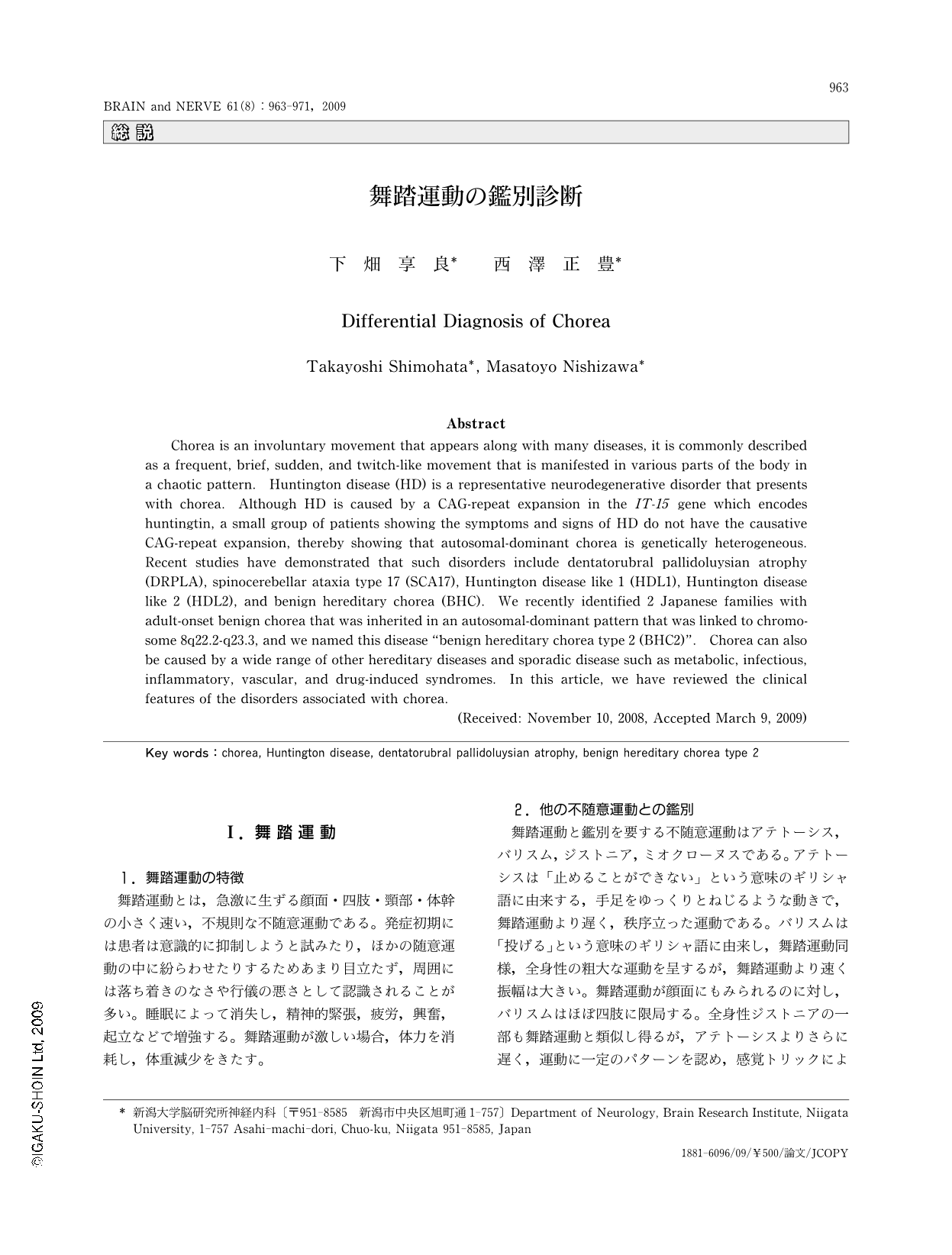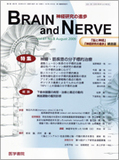Japanese
English
- 有料閲覧
- Abstract 文献概要
- 1ページ目 Look Inside
- 参考文献 Reference
Ⅰ.舞踏運動
1.舞踏運動の特徴
舞踏運動とは,急激に生ずる顔面・四肢・頸部・体幹の小さく速い,不規則な不随意運動である。発症初期には患者は意識的に抑制しようと試みたり,ほかの随意運動の中に紛らわせたりするためあまり目立たず,周囲には落ち着きのなさや行儀の悪さとして認識されることが多い。睡眠によって消失し,精神的緊張,疲労,興奮,起立などで増強する。舞踏運動が激しい場合,体力を消耗し,体重減少をきたす。
Abstract
Chorea is an involuntary movement that appears along with many diseases, it is commonly described as a frequent, brief, sudden, and twitch-like movement that is manifested in various parts of the body in a chaotic pattern. Huntington disease (HD) is a representative neurodegenerative disorder that presents with chorea. Although HD is caused by a CAG-repeat expansion in the IT-15 gene which encodes huntingtin, a small group of patients showing the symptoms and signs of HD do not have the causative CAG-repeat expansion, thereby showing that autosomal-dominant chorea is genetically heterogeneous. Recent studies have demonstrated that such disorders include dentatorubral pallidoluysian atrophy (DRPLA), spinocerebellar ataxia type 17 (SCA17), Huntington disease like 1 (HDL1), Huntington disease like 2 (HDL2), and benign hereditary chorea (BHC). We recently identified 2 Japanese families with adult-onset benign chorea that was inherited in an autosomal-dominant pattern that was linked to chromosome 8q22.2-q23.3, and we named this disease "benign hereditary chorea type 2 (BHC2)". Chorea can also be caused by a wide range of other hereditary diseases and sporadic disease such as metabolic, infectious, inflammatory, vascular, and drug-induced syndromes. In this article, we have reviewed the clinical features of the disorders associated with chorea.
(Received: November 10,2008,Accepted March 9,2009)

Copyright © 2009, Igaku-Shoin Ltd. All rights reserved.


